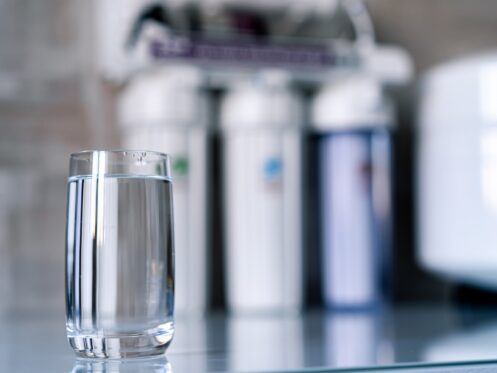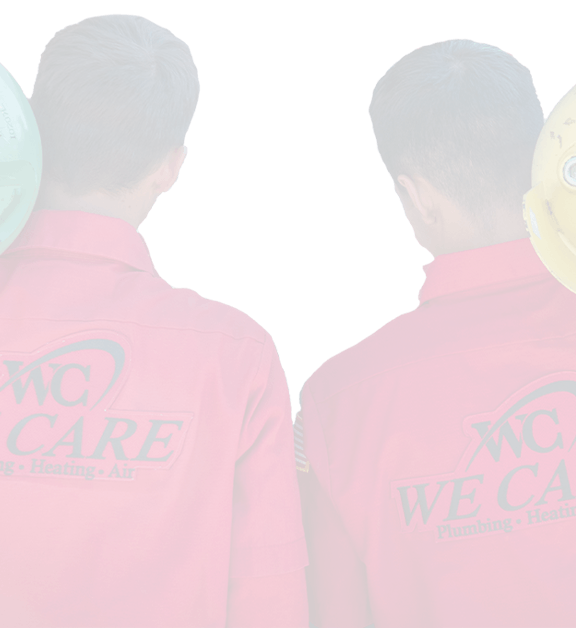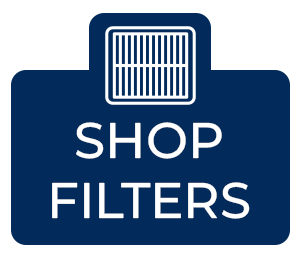Reverse osmosis is one of the most popular types of water purification systems used for residential dwellings as well as commercial buildings. Reverse osmosis utilizes proven scientific principles to ensure cleaner, safer, and better-tasting water on demand. In this article, discover the ways that reverse osmosis technology can improve the quality of water in your household.
What Is Reverse Osmosis?
Reverse osmosis is a water purification system that removes foreign contaminants, sediments, large particles, minerals, and dissolved solids from water. This system performs its technology by forcing water through a semipermeable membrane. The membrane has tiny holes that allow water to flow but block larger molecules, thereby producing cleaner water at the end of the purification cycle.
How Does a Reverse Osmosis System Work?
Reverse osmosis pushes water through several stages during the cleansing process. Each stage contains special filters to ensure thorough completion. Some of the most common filters include the following:
- Sediment Filter – Helps remove particles like dirt, soil, dust, or rust
- Carbon Filter – Reduces the presence of organic compounds like chlorine
- Semipermeable Membrane – Removes the remaining dissolved solids
At the first stage of the process, water undergoes prefiltration. This means that it flows through the sediment filter to eliminate common impurities like dust or pipe rust. The water then flows through a carbon filter to remove volatile organic compounds that are notorious for giving water a foul taste or odor.
During the next stage, water finally reaches the semipermeable membrane. This special membrane helps remove dissolved solids. In the most advanced systems, it can even help remove particles that are too small to view with an electron microscope. The purified water then goes into a storage tank for future use.
Prior to leaving the faucet for use, the purified water may also pass through a postfilter for remineralization. Since reverse osmosis deionizes water and removes nearly all minerals, this remineralization stage helps replace the type of electrolytes desirable for healthy water. The postfilter may also provide a final polishing step of sediment removal to ensure the water is ready for drinking.
Difference Between Reverse Osmosis and Regular Water Filtration
A reverse osmosis system can improve the quality of your drinking water. While the reverse osmosis process includes filters, there are several differences between this process and the type of simple filtration you might obtain from a filter pitcher or sink attachment.
Regular water filtration reduces sediment by allowing water to drip through a screen or filter tablet. While reverse osmosis uses filters to remove contaminants in the early stages, the design of its semipermeable membrane means that it can remove particles that the typical filtration device would miss.
Reverse osmosis also differs in its method of water separation and its focus on deionizing and demineralization. Instead of letting the water simply trickle through a filter, the process uses a great deal of pressure to push water through the membrane. The molecules that are too large to pass through the membrane all get left behind as a substance known as concentrate. This concentrate is full of all of the ions and minerals that reverse osmosis removes from water. As a result, the water molecules that pass through the membrane contain little to no minerals or solids.
Difference Between a Reverse Osmosis System and a Water Softener
Reverse osmosis systems and water softeners differ in several ways. One of the main purposes of reverse osmosis is to remove contaminants from water. These contaminants can range from dissolved solids to molecules. The purpose of a water softener, however, is to reduce the negative effects of hard water.
As the name suggests, hard water refers to the high content of “hard” minerals like calcium and magnesium. Water softeners treat the water by trapping the calcium or magnesium, typically replacing these ions with sodium or potassium instead. For this reason, some plumbers call water softeners “ion exchange units.” This process softens the water.
Reverse osmosis systems and water softeners can work to benefit each other. For example, a water softener can remove hard minerals before they clog plumbing or filters. A reverse osmosis system can then remove any excess sodium or ions added from your water softener.
Difference Between Reverse Osmosis and Bottled Water
Most bottled water companies use reverse osmosis to purify their products. However, installing your own reverse osmosis system is more economical and environmentally friendly than constantly purchasing bottled water. With your own system, there is no need to repeatedly go to the grocery store to stock up on plastic bottles. You also don’t have to worry about recycling or risk having the plastic bottles end up in landfills.
Finally, there is increasing evidence that bottled water brands may contain high levels of microplastics. These particles are small pieces of clear plastic debris that may leach into water during transport or if the bottles have been stored in high temperatures for long periods of time. In contrast, a reverse osmosis system purifies water at home without the need for plastic waste. You can then store your water in pitchers or stainless steel canisters so that it is always ready to drink.
Types of Impurities Removed by a Reverse Osmosis System
One of the top benefits of a reverse osmosis system is that it removes a broad range of impurities. Because of the multiple stages involved in the process, this system can reduce solids and compounds that other filtration methods would miss. Some of the substances that reverse osmosis can remove include the following:
- Sediment
- Chlorine and chloramine
- Herbicides and pesticides
- Fluoride
- Arsenic, lead, and mercury
- Detergents
- Nitrates and sulfates
- Calcium and magnesium
- Sodium and potassium
- Phosphates
This list is by no means exhaustive. Any homeowner living in an urban or suburban neighborhood can benefit from installing a reverse osmosis system to remove environmental contaminants. Similarly, rural homes can benefit greatly from the system’s ability to remove herbicides and pesticides. You can contact a licensed technician to explore the best options for your household.
Other Benefits of a Reverse Osmosis System
A high-quality reverse osmosis system can remove up to 99% of contaminants from water. By lowering the proportion of unwanted substances in water, this system may also remove the bad taste or smell associated with those substances. For example, removing chlorine can help eliminate an unpleasant bleach smell or taste. Other benefits include the convenience of a technician installing a more permanent solution than filter pitchers or bottled water. A reverse osmosis system integrates easily into the existing water supply, making it a great choice for families of all sizes.
Contact Us Today
While the technology behind reverse osmosis can seem intimidating at first, it is soon easy to see how this system can help keep your water free of contaminants. Reach out to We Care Plumbing, Heating, & Air to begin purifying water in your home. We have over 20 years of experience in plumbing and installation across Southern California, and our service areas include municipalities like San Diego County, Los Angeles County, Orange County, San Bernardino County, and Riverside County.
Along with a wide range of plumbing services, we are also proud to offer heating and cooling repairs, installations, and maintenance as well as indoor air quality assistance. Our offices are located in Murrieta, Temecula, and Orange, CA. Contact We Care Plumbing, Heating, & Air to get started today.
Author Bio: Rusty Cochran
 Rusty Cochran is the President of We Care Plumbing, Heating and Air Conditioning. We Care began humbly, operating in his family’s living room. Under Rusty’s strong leadership, We Care has grown from 2 employees to over 200 employees. We Care Plumbing, Heating and Air has gained recognition across the HVAC industry, receiving numerous awards and certifications, including being named the ACCA Contractor of the Year, The Map Presidential Award several times, Angie’s List Super Service Award, NATE certification, and multiple Dave Lennox Awards. LinkedIn Profile
Rusty Cochran is the President of We Care Plumbing, Heating and Air Conditioning. We Care began humbly, operating in his family’s living room. Under Rusty’s strong leadership, We Care has grown from 2 employees to over 200 employees. We Care Plumbing, Heating and Air has gained recognition across the HVAC industry, receiving numerous awards and certifications, including being named the ACCA Contractor of the Year, The Map Presidential Award several times, Angie’s List Super Service Award, NATE certification, and multiple Dave Lennox Awards. LinkedIn Profile







